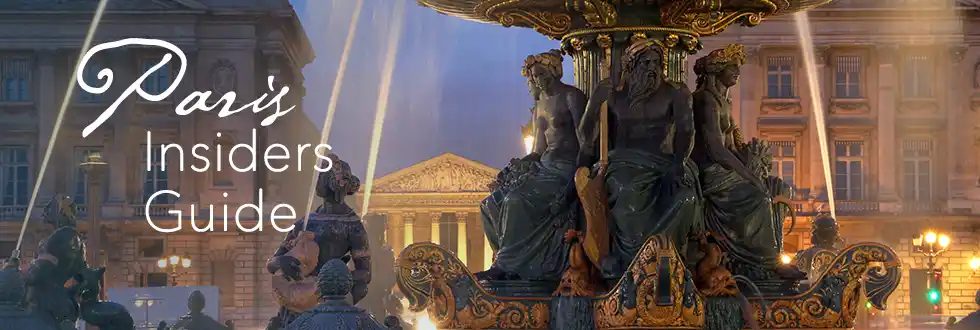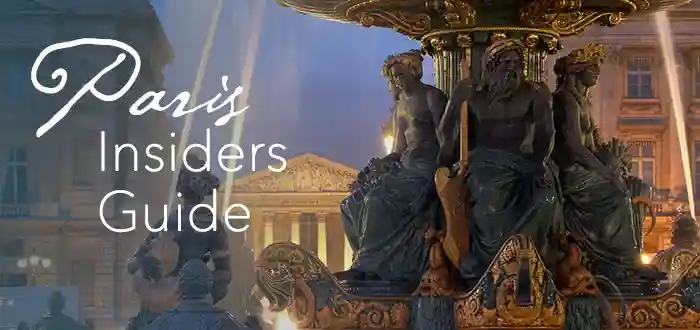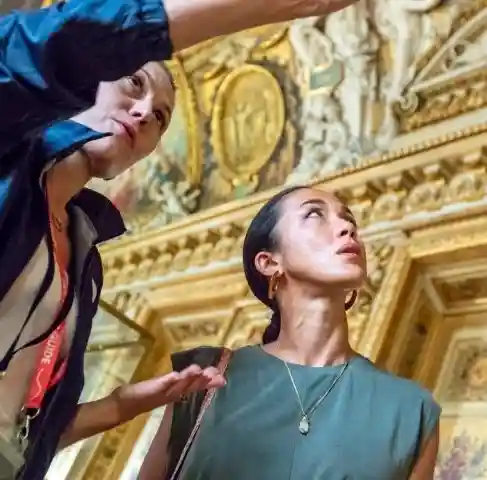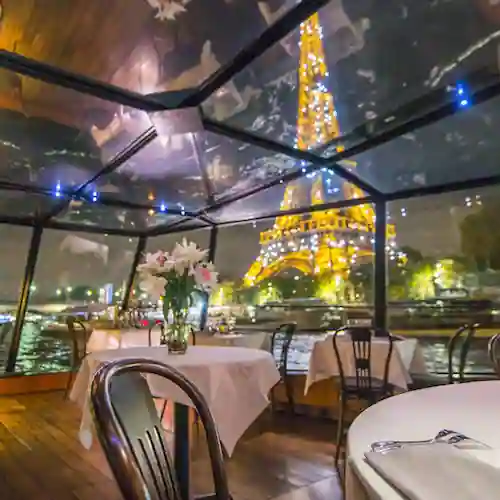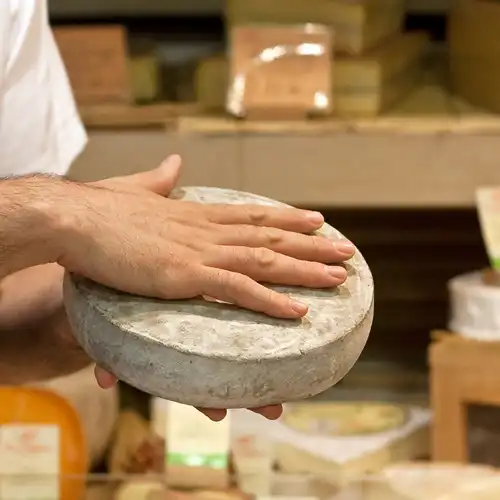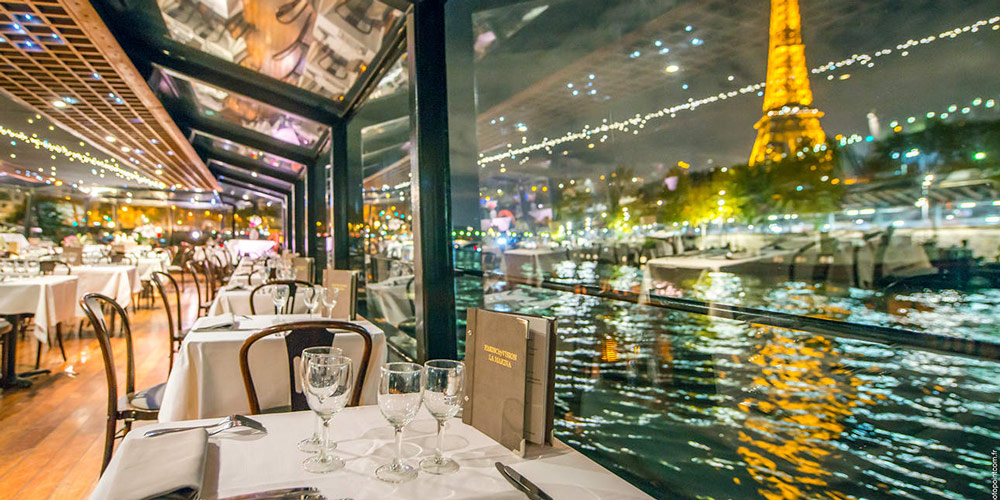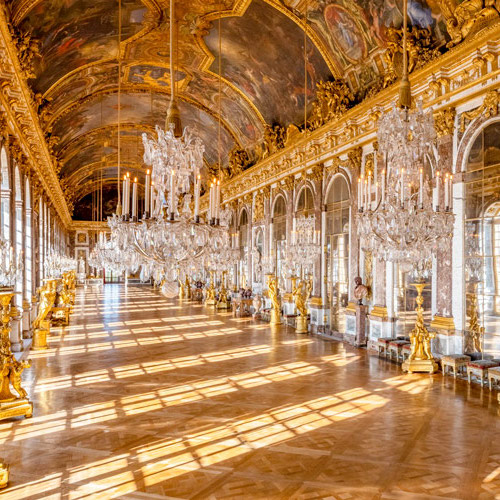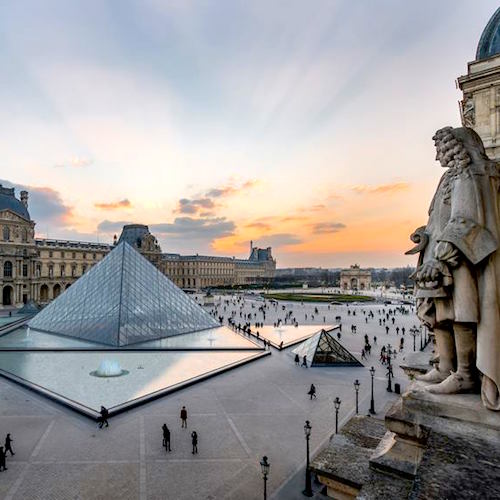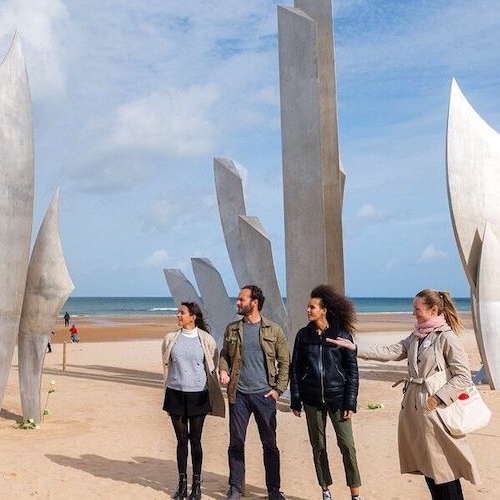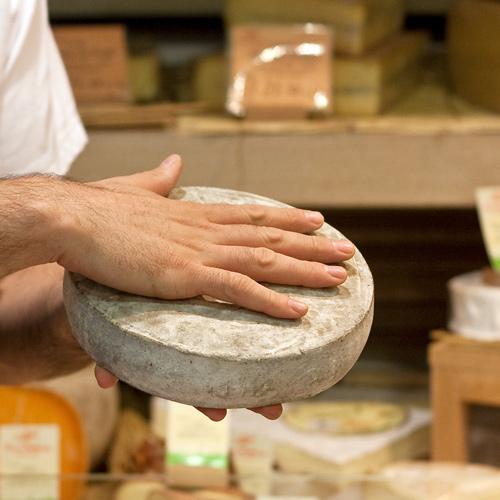Napoleon's Tomb In Paris – A Final Monument To Power
There's no such thing as a subtle exit when it comes to Napoleon Bonaparte. True to form, his final resting place in Paris is about as understated as a fireworks show at Versailles. Located beneath the golden dome of Les Invalides?, Napoleon's Tomb in Paris is a towering testament to ego, empire, and enduring fascination.
A visit here feels like brushing up against history carved in stone — massive, marbled, and meant to impress. From the emperor's colossal sarcophagus to the sculpted tributes circling him like obedient troops, it's clear: Napoleon was never going to settle for a quiet grave on an obscure island.
The History of Napoleon's Tomb Paris
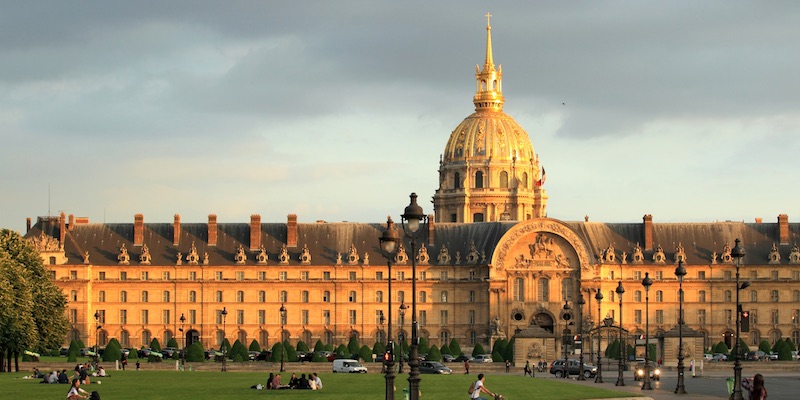 The dome of Napoleons Tomb rising above Les Invalides
The dome of Napoleons Tomb rising above Les Invalides
Napoleon didn't start out here. After his death in exile on the island of Saint Helena in 1821, his body stayed put under British supervision for nearly two decades. But in 1840, King Louis-Philippe had a flash of political brilliance and arranged the "retour des cendres" — the dramatic return of Napoleon's remains to France.
Parisians lined the streets, church bells rang, and cannons thundered. It was more than a funeral; it was a national rebranding. Napoleon, once exiled, was back in favor, and France needed a monument to match.
What better place for grandeur than Les Invalides? — originally built under Louis XIV as a hospital and retirement home for veterans. The grand dome, gilded and glorious, offered the kind of stage Napoleon would've chosen himself. His tomb was placed directly beneath it, dead center in the church built for kings and soldiers alike.
But the whole endeavor took time. Architect Louis Visconti didn't just drop a coffin into the crypt. He embarked on a decades-long sculptural symphony involving generals, allegories, and a 15-foot sarcophagus carved from rare red stone hauled from halfway across Europe.
The Best Paris Activities
The Top Paris Activity
The Architecture & Design of the Tomb
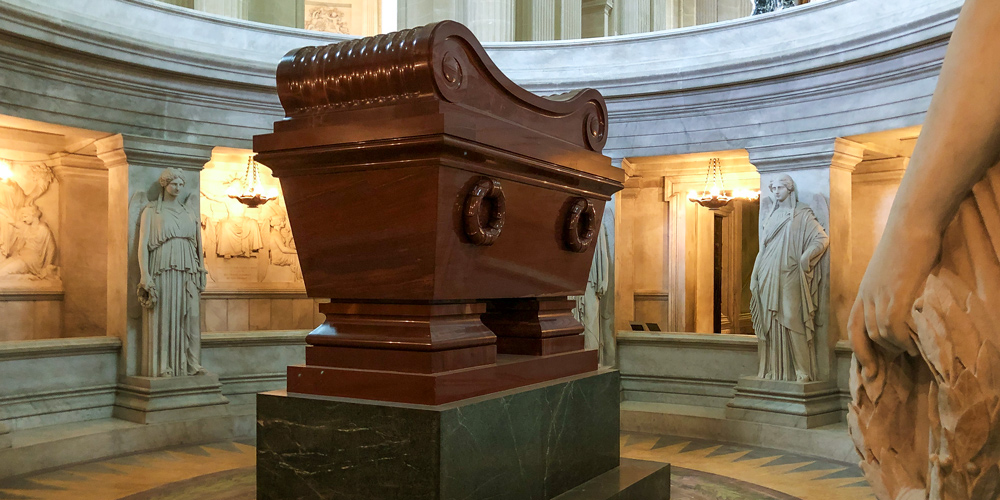 The sarcophagus of Napoleon beneath the golden dome, photo by Mark Craft
The sarcophagus of Napoleon beneath the golden dome, photo by Mark Craft
Let's talk gravitas. Visconti's design didn't whisper; it roared. The Napoleon's Tomb architecture plays out like an opera of power and symbolism. Visitors descend into a sunken circular crypt lined with twelve carved figures representing Napoleon's military victories — grim, toga-draped, and ready for their close-up.
At the center lies the main act: the Napoleon's Tomb sarcophagus, cut from Shoksha quartzite, a stone so rare they had to ship it from Russia. Set atop a slab of green granite from the Vosges, the whole structure is bold, blocky, and imperial with a capital "I".
Above, the Dôme des Invalides glitters with gold, rising nearly 110 meters into the sky. Mosaic angels peer down, as if wondering whether they should salute. Every inch is deliberate, from the marble inlays to the Romanesque floor pattern designed to funnel your gaze straight to the tomb.
There's a touch of Roman emperor grandeur here — part Pantheon, part showbiz. It's not exactly subtle, but then again, neither was Napoleon.
Who Lies at Les Invalides? Not Just Napoleon.
 The sarcophagus of World War I general Ferdinand Foch, photo by Mark Craft
The sarcophagus of World War I general Ferdinand Foch, photo by Mark Craft
The Tomb of Napoleon in Paris may be the headliner, but he's not alone under the dome. Napoleon's son, Napoleon II — AKA "The Eaglet" — was moved here from Vienna in 1940, thanks to Hitler, of all people, who wanted to strengthen ties with Vichy France. History is weird like that.
Napoleon's brothers, Joseph and Jérôme, are here too, joined by loyal comrades like Generals Bertrand and Duroc, who followed him to Saint Helena and beyond. Marshal Ferdinand Foch, hero of World War I, rests here as well, along with Marshal Lyautey, whose tomb sits opposite Napoleon's like an eternal stare-down.
Together, they form a who's-who of French military legend, giving the site more punch than a battlefield reunion. It's not just a tomb; it's a shrine to military ambition and fraternal pride. Les Invalides Napoleon's Tomb is France's answer to Westminster Abbey — minus the poets and with more sabers.
Skip the Paris Lines
Skip the Paris Lines
The Legacy and Cultural Impact
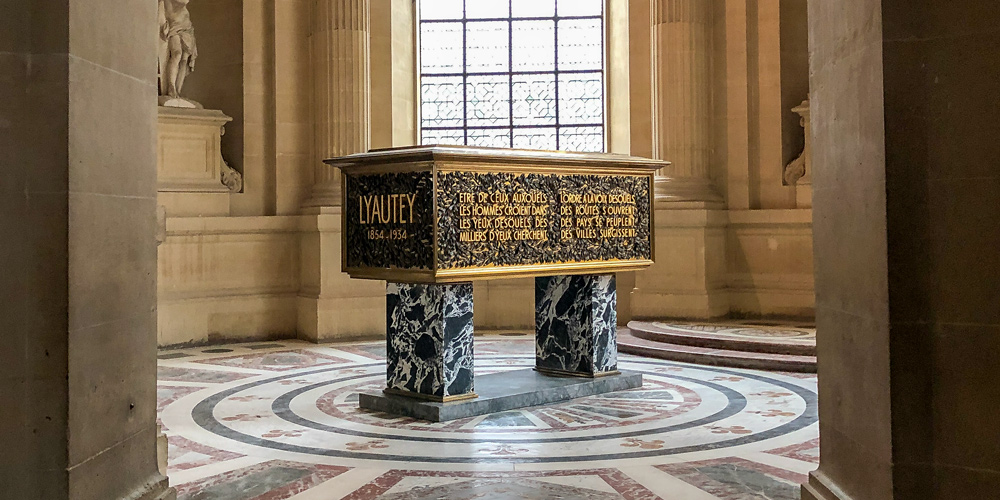 The sarcophagus of Marshal Lyautey, photo by Mark Craft
The sarcophagus of Marshal Lyautey, photo by Mark Craft
More than a place to park a famous body, Napoleon Bonaparte's tomb in Paris is a cultural heavyweight. It's been the site of grand ceremonies, political theater, and state visits. Charles de Gaulle once said that visiting the tomb was like "walking through the soul of France".
In 2021, the "Memento Marengo" installation marked the bicentenary of Napoleon's death with theatrical flair: holograms, battlefield echoes, and a modern rethinking of the emperor's complicated legacy. France has a love-hate relationship with Napoleon — admired for his reforms, questioned for his ambition — but no one ever ignores him.
Ask the schoolchildren shuffling through on field trips. Ask the military cadets lined up for commemorations. Or ask the tourists who stare slack-jawed at the sarcophagus, trying to wrap their heads around the man beneath it. Napoleon's Tomb facts may be historical, but the emotions are current.
![]()
|
Paris Dinner Cruises on the Seine Dine in style as you glide past the Eiffel Tower, Notre-Dame, and the Louvre on a magical Seine River cruise. Gourmet food, champagne, and Paris lit up at night – it’s unforgettable. |
|
Paris Dinner Cruises on the Seine Dine in style as you glide past the Eiffel Tower, Notre-Dame, and the Louvre on a magical Seine River cruise. Gourmet food, champagne, and Paris lit up at night – it’s unforgettable. |
What to See at Napoleon's Tomb
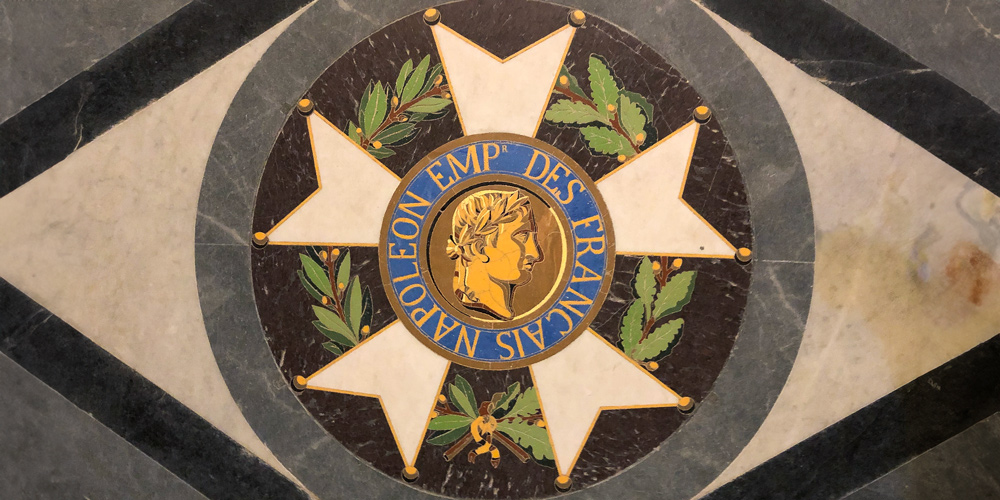 The seal on the floor of the tomb of Napoleon, photo by Mark Craft
The seal on the floor of the tomb of Napoleon, photo by Mark Craft
First: look up. The dome ceiling is a baroque burst of heavenly gold. Then look down — Napoleon is literally in the spotlight, encircled by his carved victories. You'll want to pace the gallery, peer into the crypt, and let the sheer scale of the thing sink in.
Don't miss the mosaic floor, the sculpted bas-reliefs, and the Latin inscriptions. Napoleon may have had a complex legacy, but his résumé — coded into the walls — focuses heavily on the winning bits.
For those wondering where in Paris is Napoleon buried , the answer is not just a location — it's an entire performance. Visiting Napoleon's Tomb is part art appreciation, part power pilgrimage. Add it to your itinerary with enough time to wander the rest of Les Invalides, especially the Musée de l'Armée, which covers everything from medieval armor to World War II.
And if you want a moment of quiet awe, try going just after opening. You may get the rare chance to stand in that magnificent space in near silence, with only the sound of your own footsteps for company.
![]()
|
Browse our hand-picked Paris hotel deals with real-time discounts of up to 20%. Stay in the Marais, Saint Germain, the Latin Quarter, the Left Bank near the Eiffel Tower… every arrondissement is on the list. |
|
Browse our hand-picked Paris hotel deals with real-time discounts of up to 20%. Stay in the Marais, Saint Germain, the Latin Quarter, the Left Bank near the Eiffel Tower… every arrondissement is on the list. |
Reflection: A Monument Worth the March
 The golden dome above Napoleon's Tomb, photo Les Invalides
The golden dome above Napoleon's Tomb, photo Les Invalides
In a city filled with triumphal arches and medieval cathedrals, Napoleon's Tomb Paris still manages to feel bigger than life — and bigger than death. It's a spectacle of ambition, a showcase of design, and a keyhole into France's martial soul.
You don't need to be a history buff to appreciate the drama here. You just need eyes, a bit of curiosity, and perhaps a tolerance for grandeur. This isn't just a grave. It's a destination. A tribute. A thunderous period at the end of a very French sentence.
- 129 Rue de Grenelle
- 7th Arrondissement
- Tomb of Napoleon Website…
Paris Planning Guides
 10 Food Experiences
10 Food Experiences |
 Left Bank Hotels
Left Bank Hotels |
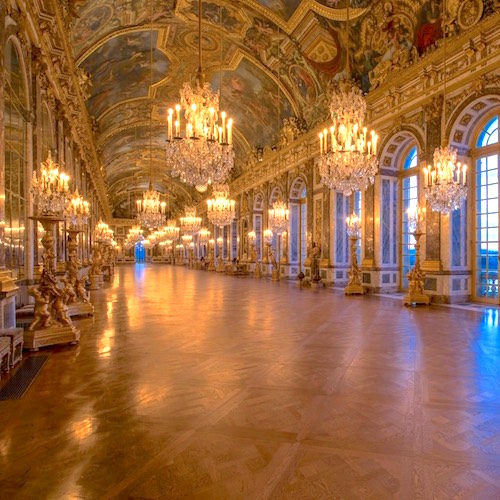 Visiting Versailles
Visiting Versailles |
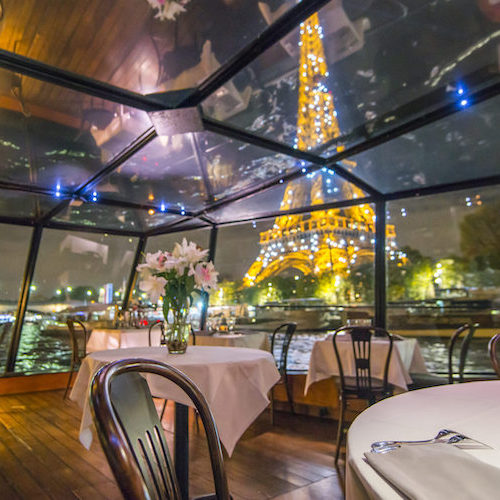 Glorious Dinner Cruises
Glorious Dinner Cruises |
